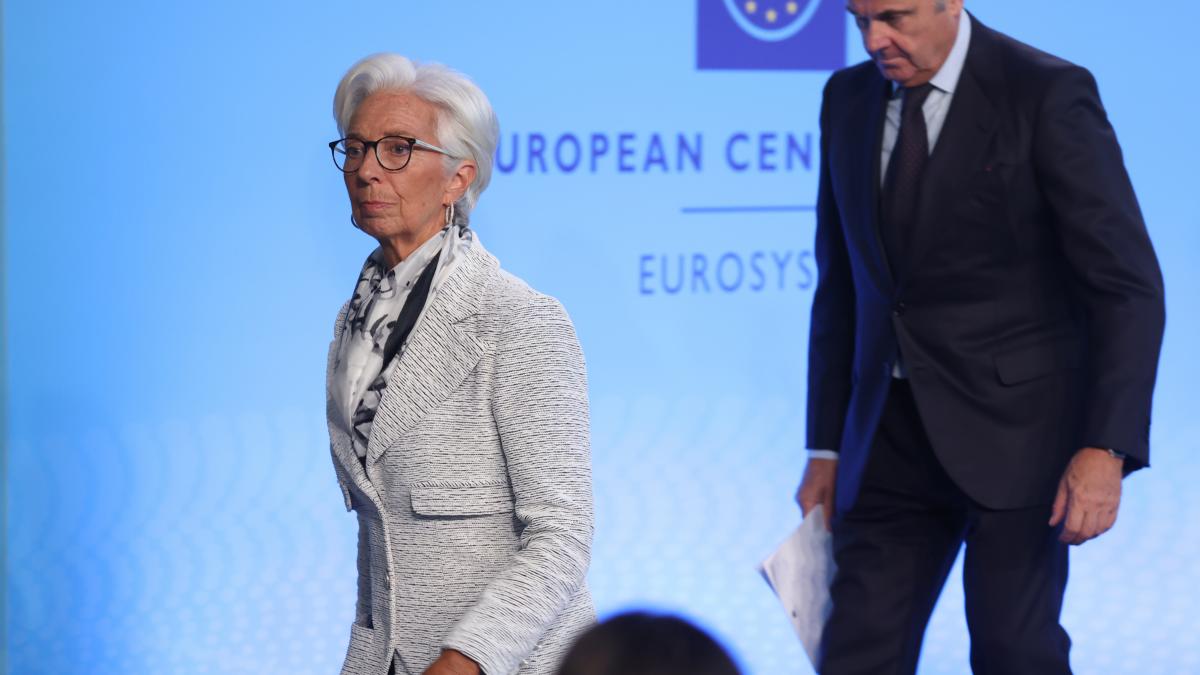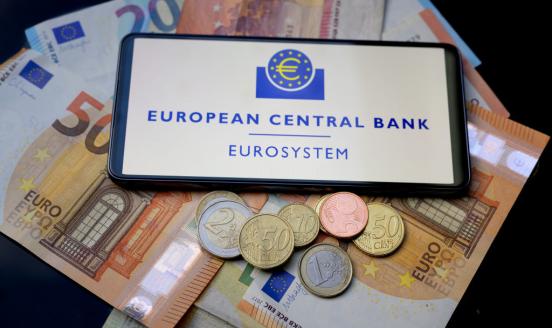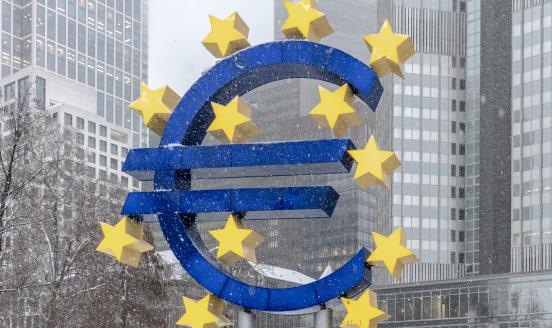Tackling inflation: learning from the European Central Bank's six lapses
While mistakes unduly constrained rate hikes, gradual tightening is the right approach along with a new instrument to address energy bottlenecks.

In July 2022, by the time the European Central Bank (ECB) lifted its deposit rate from negative to zero, headline inflation in the euro area had reached 8.9%. Irrespective of the drivers of inflation – a temporary supply shock or lasting demand shock – it is shocking that a central bank with a price stability mandate keeps its main interest rate negative while inflation accelerates that much.
Something clearly went wrong. With the benefit of hindsight, it is easy to say that the ECB made mistakes. But should the ECB have acted differently, given the information available at the time of its monetary policy meetings?
No forecaster predicted a strong and long-lasting increase in euro-area inflation in late 2021, nor were the energy supply problems resulting from Russia’s invasion of Ukraine foreseen. It would thus be unfair to blame the ECB for not raising rates already in 2021. However, an analysis we carried out for the European Parliament suggests the ECB made several mistakes at its December 2021 monetary policy meeting, which have been corrected only slowly and resulted in a delayed interest rate increase.
The six lapses
First, at the time of the December 2021 meeting, the November 4.9% headline and 2.6% core inflation data were known, and ECB staff forecasted GDP growth “to rebound strongly over the course of 2022”, with 4.2% GDP growth in 2022 and 2.9% in 2023. Risks were evaluated as balanced and financing conditions for the economy were assessed to be favourable. Despite the rosy growth outlook, and well above-target and accelerating inflation, the ECB Governing Council concluded that monetary accommodation was still needed. Yet, we could not find an explanation in the monetary statement as to why. Only the 1.8% staff inflation forecast for 2023-2024 suggested that inflation might marginally undershoot the 2% target.
Second, two potentially conflicting forward-guidance conditions were provided on the timing of an interest rate increase, a conflict that did indeed materialise. One condition was data-dependent: the medium-term staff forecast for headline inflation had to increase to 2% and actual core inflation had to rise. The other condition was date-dependent: interest rate increases would happen only after the ending of net asset purchases. At this same meeting, monthly asset purchase amounts under the asset purchase programme (APP) were specified throughout 2022, including the monthly pace of €20 billion “from October 2022 onwards […] for as long as necessary to reinforce the accommodative impact of our policy rates”. This implied asset purchases would continue after October 2022 and interest rates would be raised even later. But the skyrocketing headline and core inflation required earlier interest rate increases.
Third, it is hard to see what motivated the ECB to extend forward guidance on APP net purchases beyond October 2022, almost a year ahead of the December 2021 meeting, at a time of high and rising inflation and strong growth. Data-dependent forward guidance on asset purchases would have allowed earlier action.
Fourth, interest rate forward guidance put too much emphasis on ECB staff forecasts, even though staff forecasts had a poor track record in the five years prior to the COVID-19 pandemic, when no major shock hit the economy.
Fifth, even though the July 2021 ECB monetary policy strategy review underlined the importance of including owner-occupied housing costs in the consumer price index, this was not taken into account in the inflation forecast. Including it could have brought the December 2021 inflation forecast for 2023 and 2024 to 2% or higher. As noted in our first point above, the 1.8% staff inflation forecast seemed to be the only justification for continued monetary accommodation.
Sixth, following the planned end of pandemic emergency purchase programme (PEPP) net purchases in March 2022, the APP net purchases were to increase from April, suggesting a kind of compensation. However, the two instruments had different goals, as ECB President Christine Lagarde stressed at various times. It is puzzling why the APP, an instrument aimed at increasing inflation, was boosted when inflation was high and rising, the growth outlook was strong, and the discredited staff forecast – without considering owner-occupied housing costs – suggested just a minimal undershooting of the 2% target in 2023-2024. We cannot exclude the hypothesis that fear of “renewed market fragmentation”, as emphasised in the December 2021 statement, played a role in the expansion of the APP. If so, it would have been preferable to introduce a transmission protection instrument (which was introduced only in July 2022) earlier.
Two main lessons from this are that (1) central banks should avoid potentially conflicting conditions in their forward guidance, and (2) any instrument should be used for the purpose it was designed for, not for something else.
A more fundamental question is whether forward guidance is useful. It did not help much in the 2015-2019 pre-pandemic period of economic growth, when core inflation was stuck at 1%. In 2022, some promises made under forward guidance had to be broken when inflation skyrocketed.
Would earlier interest rate hikes have made a difference?
An analysis of a series of indicators led us to conclude that inflation has been mainly supply-driven in the euro area, while there has been a strong demand component in the United States and United Kingdom. Since monetary policy tools influence inflation primarily via demand and with a time lag, euro-area inflation rates in 2022 might not have changed much even if the ECB had started tightening earlier. Yet, the second-round effects of an initially supply-driven rise in inflation might result in persistently higher inflation. Hence, the central bank should have acted even if the inflation increase was initially mostly supply-driven.
Furthermore, acting belatedly might undermine central bank credibility. Consumers might lose their trust in the ECB when they witness rapidly growing prices, earn zero interest on their bank deposits and the ECB does not do anything. Investors might conclude that fear of fragmentation (including the increase in the government bond yields of fiscally vulnerable euro-area countries) prevents the ECB from pursuing its mandate. After a loss of credibility, the central bank might need to tighten monetary policy by more than what would have been sufficient under high credibility.
Looking forward: What should be the pace of interest rate hikes?
ECB interest rates must go higher. A 0.75% deposit rate is highly accommodative when headline inflation is 9.1%, the long-term expectations of professional forecasters and financial markets are slightly over 2% and consumer expectations are close to 5%. How much should monetary policy be tightened, and how quickly, given the uncertain economic consequences of Russia’s war?
Financial markets expect the ECB deposit rate to be increased to about 2% by end-2023 and to stay at this level. This implies a real interest rate of zero (nominal interest rate minus inflation) when long-run inflation expectations are also at 2%. In the past, taming high inflation warranted much higher real interest rates. We suspect that the ECB deposit rate will need to go well above 2% to prevent the current high inflation from leading to inflation persistently above 2% in later years.
But this does not imply that tightening needs to be abrupt. There are arguments on both sides:
- The main argument for forceful monetary tightening is that inflation might remain persistent irrespective of whether it is caused by supply or demand shocks. High inflation without forceful action might undermine the credibility of the central bank and the costs of acting too late might be high.
- The main argument for slower rate increases is that it would reduce demand and economic activity only one or two years from now. By then, current inflation, mostly supply-driven, may have declined as the current energy price shock wanes and shortages of certain production inputs ease. Weaker economic activity resulting from the economic fallout from the war, as well as lower demand resulting from lower real wages, could depress euro-area output and inflation. A particular risk is an eventual complete stop in Russian gas supply to the EU this winter, which could lead to a recession. Leading indicators reflecting business and consumer confidence in the euro area show notable declines in sentiment. The drop is particularly steep for consumers, who in July 2022 were more pessimistic than anytime in the past fifty years, including the oil price shocks of the 1970s, the global financial crisis, the subsequent euro crisis and the COVID-19 pandemic.
Taking all factors into account, we recommend gradual interest rate hikes until the economic fallout from the war becomes clearer. In the absence of a recession, faster interest rate increases could resume. But in case of a recession, rate increases might need to be halted.
A new instrument to address energy bottlenecks
Irrespective of the course of interest rate developments, we recommend that the ECB should design a special longer-term refinancing operation (LTRO) to make conditions more favourable for investments in energy efficiency and clean energy generation. While in general ECB policies should not be sector-specific, the supply-induced energy price increase is the main driver of current euro-area inflation and might be a driver in the years to come. Increases in policy rates could discourage energy investments and thereby aggravate the inflation outlook. A new energy-LTRO would mitigate the main supply-side driver of inflation.
This blog post is based on a study prepared for the European Parliament’s Committee on Economic and Monetary Affairs (ECON). The study is available on the European Parliament’s website.



